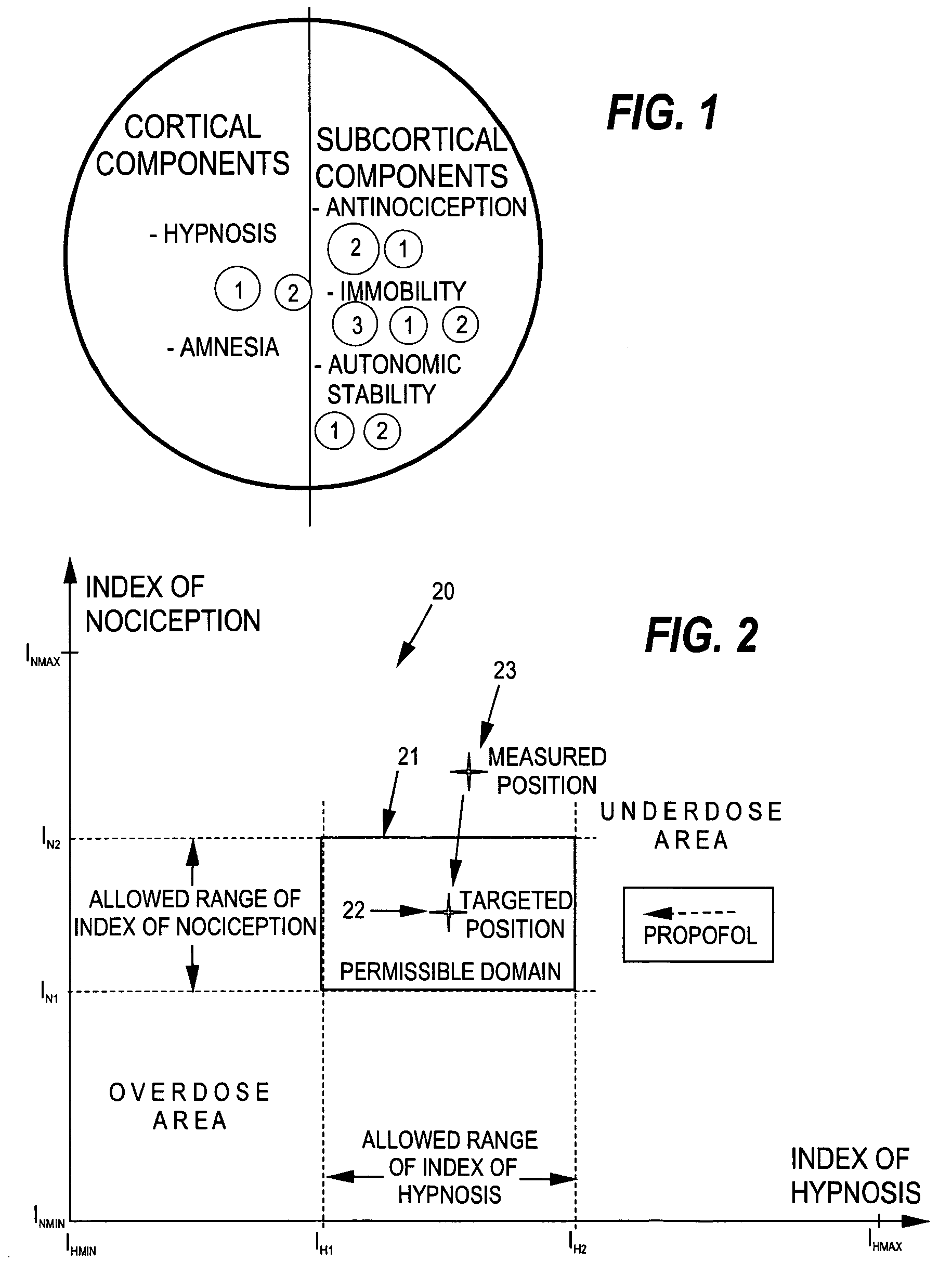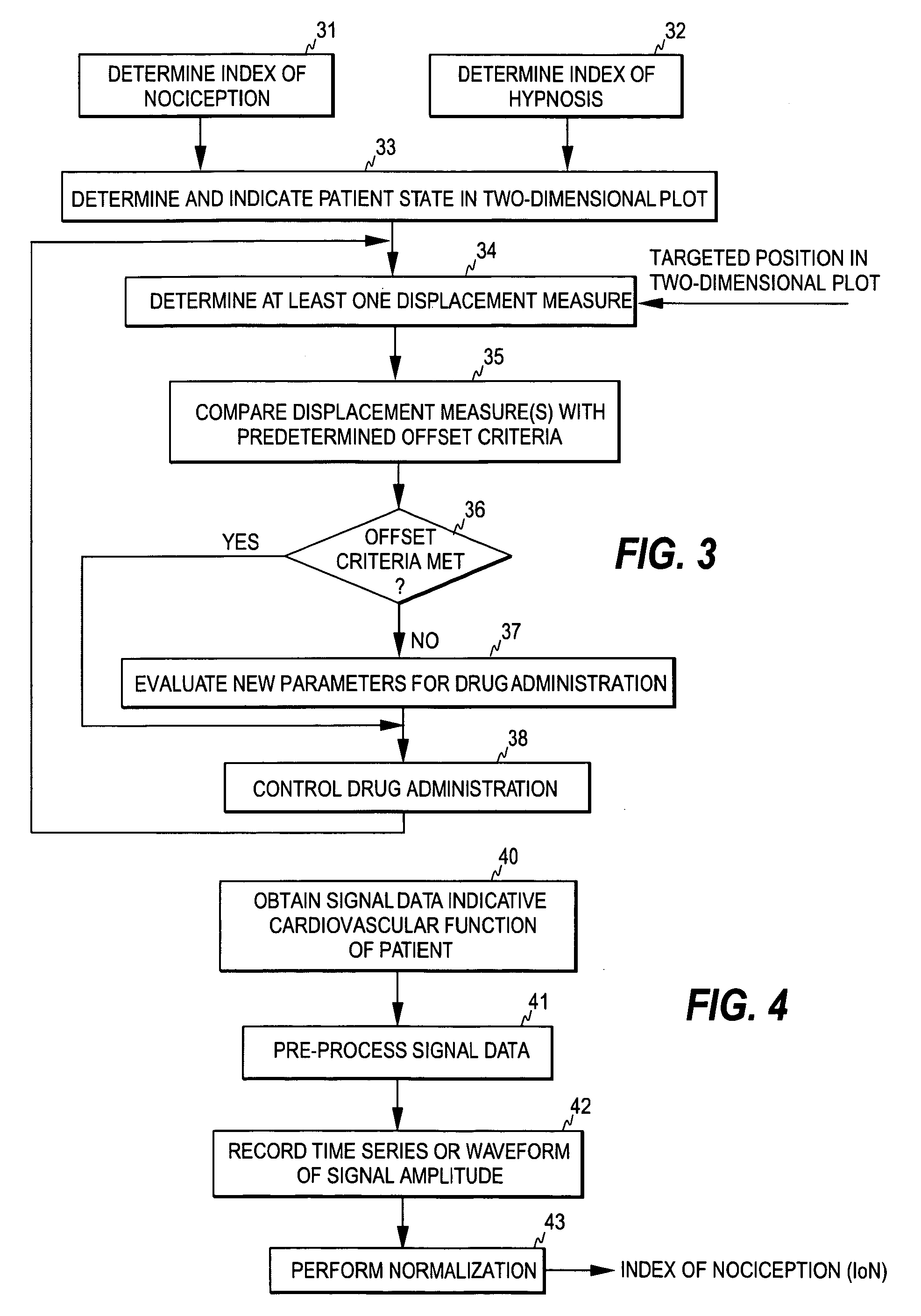Determination of the anesthetic state of a patient
a patient and anesthetic state technology, applied in the field of determining can solve the problems of inability to design inability to reliably control variables, and basic difficulties in designing a well-performing closed-loop system, so as to achieve balanced anesthesia, determine and control the anesthetic state of patients.
- Summary
- Abstract
- Description
- Claims
- Application Information
AI Technical Summary
Benefits of technology
Problems solved by technology
Method used
Image
Examples
Embodiment Construction
[0041]FIG. 1 illustrates the concept of the quality of anesthesia. According to the current comprehension, the anesthesia includes five different components: hypnosis (i.e. unconsciousness), amnesia, antinociception, immobility, and the stability of the ANS. The first two components, the hypnosis and amnesia, are of cortical origin and are indicative of cortical activities and processes. The suppression of the cortical activity is obtained by drugs, which typically affect neural signaling globally in the brain. The drugs may activate the natural inhibitory GABA receptor system in the brains or prevent, by an unknown mechanism, neural signaling in the synapses between the neurons. For this reason, the drugs often also affect other parts than the cortex in the brain, thereby also suppressing subcortical activity and processes.
[0042]The other components in the anesthesia model, which are indicative of sub-cortex related activity in the patient, are much more specific and often relate t...
PUM
 Login to View More
Login to View More Abstract
Description
Claims
Application Information
 Login to View More
Login to View More - R&D
- Intellectual Property
- Life Sciences
- Materials
- Tech Scout
- Unparalleled Data Quality
- Higher Quality Content
- 60% Fewer Hallucinations
Browse by: Latest US Patents, China's latest patents, Technical Efficacy Thesaurus, Application Domain, Technology Topic, Popular Technical Reports.
© 2025 PatSnap. All rights reserved.Legal|Privacy policy|Modern Slavery Act Transparency Statement|Sitemap|About US| Contact US: help@patsnap.com



